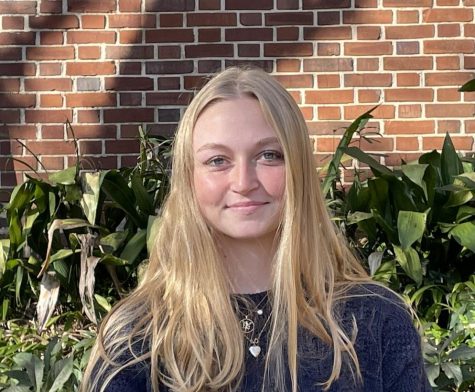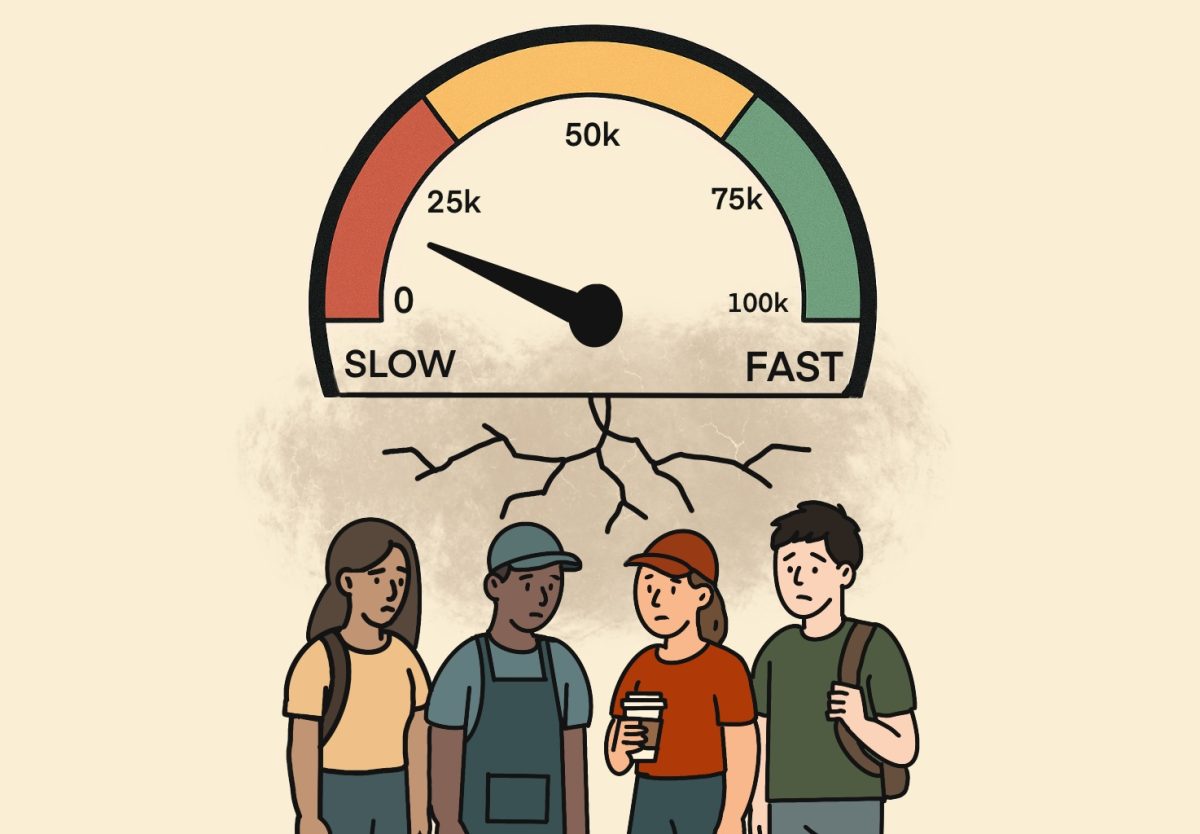AP Art portfolio process, a student perspective
Senior Mackenzie Service’s first three pieces featured a series of matchboxes. The gradual emptiness of the boxes is meant to portray her concentration on losing motivation. The first box is almost full, the second is halfway full with burnt matches surrounding it and the third is completely empty with only burnt matches. “The first matchbox I made was intentionally not completely full, even though when you compare it to the second and third matchboxes, it looks full,” Service said. “As humans we always crave more and we continuously desire this feeling of completeness and wholeness. Once we reach it, we keep going and it’s like this downward spiral, so that’s why those ones are not all the way full. The empty box is to represent being drained or completely burnt out.”
March 14, 2022
Staying up until 3 a.m., spending 10 hours on a single piece and re-touching paintings countless times. This is the reality for second semester AP Art students working on their portfolios.
AP Art and Design portfolio submissions consist of two parts: sustained investigation and selected works. Students are required to submit 15 digital images to document their pieces and assemble five pieces to be sent directly to the AP Program at College Board for analysis.
“The portfolio has a bunch of hidden red tape,” senior Mackenzie Service said. “It’s not just 15 pieces — it’s so much more. It’s your thesis and your growth and exploration and showing development through all of that. Carrying the story is difficult, but it’s also just the time and expected quality of the pieces.”
To create these pieces, students must first select a concentration or thesis. Most of the second semester of the course is spent working on developing the portfolio. Service concentrated on the concept of losing motivation.
“Step one is choosing your thesis and figuring out how something connects to your thesis,” Service said. “Sometimes, painting a person’s face could be fun, but you have to figure out how to connect that to your thesis. You have to think ahead because if you started with something like faces, you’d have to somehow connect everything to a face. I started with something that could go so many different routes, so I had the freedom to go wherever I wanted with it.”
The thesis could be anything, as long as the entire portfolio relates back to that concept.
“My concentration is focused on the last moments of sun in the evening and the metaphor of time slipping away,” senior Tatum Dutton said. “I was inspired to choose this theme because my favorite part of sunsets has always been the bright yellow sun cast at the end of the day.”
Other students, like senior James Washington, chose to focus on concepts related to growth and change.
“My concentration topic is about the growth and development of three different people from different backgrounds,” Washington said. “I want to show how people that all start out as babies with different lives grow and turn into all different types of people. I chose this because it allows me to have three subject matters instead of one, and I easily came up with all 12 pieces.”
From there, materials and substrates are selected to complete pieces. Students face the challenge of maintaining the piece for four months until they have to submit them. Although it seems straightforward, the portfolios create a complex set of issues and tasks for second semester seniors.
“One of the biggest challenges for me has been time management,” Dutton said. “We have to produce a lot of pieces in a constrained amount of time. It takes a lot of dedication, and it’s difficult to put that time and effort into something when I know I’ve already applied to college, and I’m about to graduate.”
Many students also found difficulty keeping a sense of individuality and personal style throughout the creation of the pieces.
“It’s not just you sitting down and making art,” Service said. “You feel like you have to sit down and make your best pieces because of what it is. It’s objective, obviously, because it’s art, but you also look up 5s on the AP art portfolio and you almost feel yourself saying, ‘this is what I need to do.’ It makes it feel a little less subjective because there are these boundaries and guidelines to what they want. There’s definitely a formula to it but that removes the point of art.”
Finding time to work on pieces presented major challenges.
“I’d say, for me, each piece takes about three days since I can only work a couple hours a day,” Washington said. “However, I don’t really consider many pieces done since you can always add more to it. It’s a nonstop process.”
After completing the portfolio, pieces will be displayed at the senior art show at the end of the semester. During the show, viewers will be capable of purchasing pieces.
“People can come and buy our pieces,” Service said. “Seeing twelve pieces of your work up on a wall with your name by it will be really cool. There’s so many talented people, and it’s amazing to see how everybody goes about the process because it’s all so different. For us to all come into a room and see equal representation of the work is going to be awesome.”
Overall, students seem excited about the feelings of satisfaction brought by completing the portfolio.
“My favorite thing about the process is finishing a piece,” Service said. “During the process of creating a piece and limboing back and forth on what looks good and what’s working — that sucks. It’s such an unmotivational part, but when you’re done, and you look at it, and you’re happy with it, you sit back and you’re like, ‘I did that.’ That’s the best part, and it’s going to be amplified when we actually finish the portfolios.”







